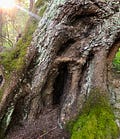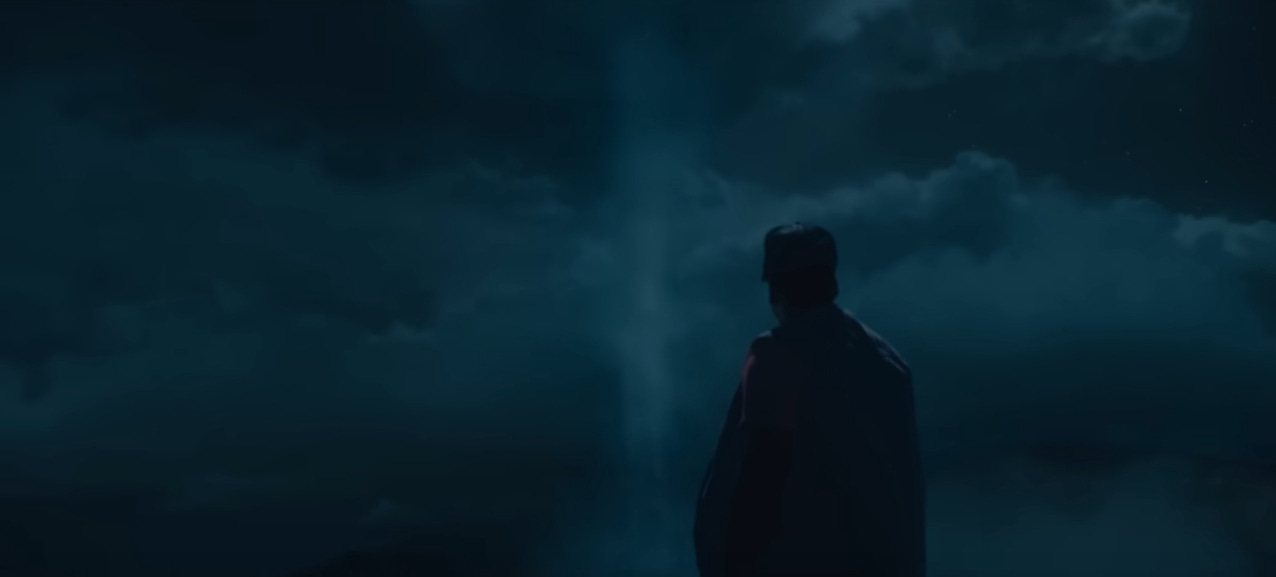UAP Spectacular! Ukrainian Meteor Researchers Submit Paper on How to Record UAPs** AND Review of Jordan Peele's Film "Nope" and its Biblical Connections
**Includes Rough Cost Estimate for UAP Capture Device Used in Study
In This Issue:
Meteor researchers from the Main Astronomical Observatory of the National Academy of Sciences of Ukraine submitted a paper on how they captured Unidentified Aerial Phenomena using commercially available digital astronomy cameras.
Review of Jordan Peele’s latest film Nope and its Book of Nahum reference.
Poem for 2022.09.16
Out and About Photo for 2022.09.16
Editor Notes:
Timeline leading up to Mar-a-Lago search has been updated to reflect further unsealing of the affidavit of probable cause (incl. additional grand jury subpoena that sought and obtained surveillance footage of the basement).
Older posts will be getting updated so that the headline style/linking format is consistent with more recent posts.
Ukrainian Meteor Researchers Develop Method to Capture Unidentified Aerial Phenomena (UAP)
120km (~75mi) south of Ukraine’s capitol Kyiv, is a Ukrainian National Academy of Sciences meteor observation station near a village called Vinarivka. The Vinarivka station, along with an observation station in the forested Holosiivskyi park on the outskirts of Kyiv, conducted daytime observations of Unidentified Aerial Phenomena (UAP - a successor term for UFO or Unidentified Flying Object). This was done using commercially available digital astronomy cameras with some key technical setting modifications. According to the researchers, they “observed a broad range of UAPs everywhere. We state a significant number of objects whose nature is not clear.”
In the paper submitted on August 23, 2022, called Unidentified aerial phenomena I. Observations of events, the authors B.E. Zhilyaev, V.N. Petukhov, and V.M. Reshetnyk, state that their primary job is observation of meteors and other “space invasions” for the Main Astronoimical Observatory, National Academy of Sciences of Ukraine. This team partially relied on methods developed from their prior study of meteors using digital astronomy cameras, citing to a paper called Meteor colorimetry with CMOS cameras. The authors suggest being inspired to conduct observations of UAPs due to actions taken by the USA’s Department of Defense and NASA, which announced this past June it will setup an independent UAP study. The Ukrainian researchers writing:
“NASA commissioned a research team to study Unidentified Aerial Phenomena (UAP), observations of events that cannot scientifically be identified as known natural phenomena. The Main Astronomical Observatory of NAS of Ukraine conducts an independent study of UAP also.” (Page 1, emphasis added)
Based on their observations of UAPs they created two primary classification groups called “Phantoms” and “Cosmics.”
“We note that Cosmics are luminous objects, brighter than the background of the sky. We call them names of birds (swift, falcon, eagle). Phantoms are dark objects, with a contrast, according to our data, from 50% to several per cent. Both types of UAPs exhibit extremely high movement speeds.” (Pages 1-2, emphasis added)
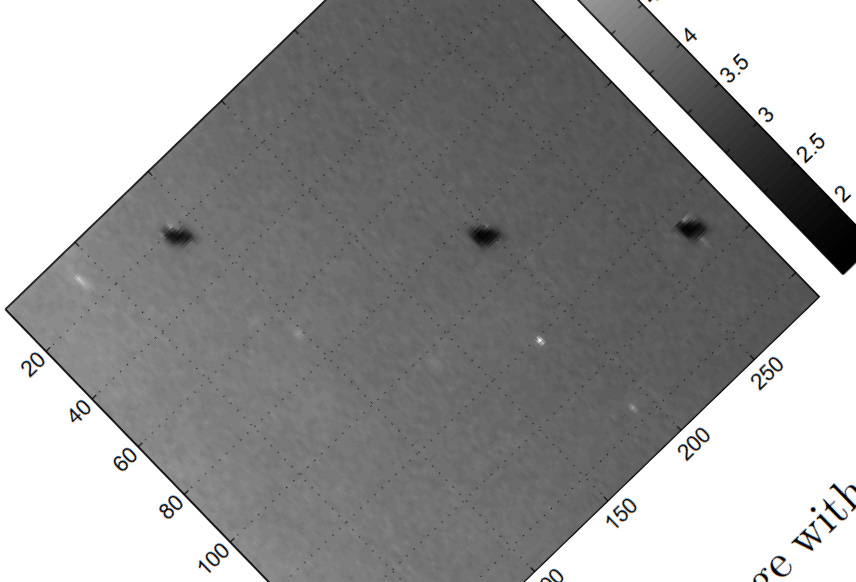
The UAP study’s authors state multiple times that the “main feature of the UAP is its extremely high speed.” By high speed, they mean so fast that the human eye would not be able to detect movement if one of these objects was stationary and then decided to zoom away. What would instead be perceived by human eyes is that such an object had suddenly vanished rather than moved. The study states that they have observed Phantom type UAPs going 15 km/s (or 33,554 miles per hour) in the troposphere, which is where the Earth’s atmosphere is thickest and has an average height of 18 kilometers/11 miles from Earth’s surface. Currently, the potentially fastest known human object in atmosphere is a hypersonic weapon during re-entry that claims to be able to go Mach 27, which is about 10,000 miles per hour slower. The researchers also reported a flashing (likely Cosmic) UAP at speeds of up to 282 km/s (or 630,816 miles per hour) in the exosphere, where Earth’s atmosphere barely exists at all, at an altitude of 1174 km (or 730 miles). In observations of transverse speeds of a group of UAPs, the researchers noted “the ‘speeds’ correlate with the brightness, namely, the greater the brightness, the greater the speed” (Page 2, regarding figures 3 and 4).
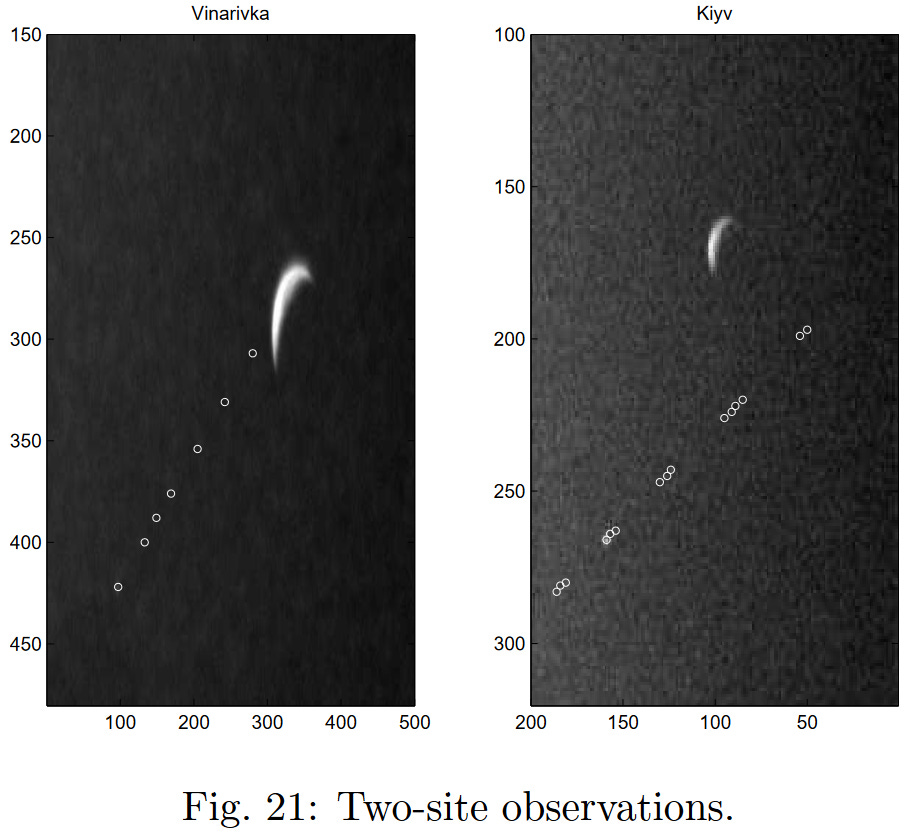
These high rates of speed necessitated particular “tuning” of equipment in order to capture the UAPs using digital astronomy cameras. Specifically, they set their cameras to take 50 images per second (frame rate), with an exposure time of 1 millisecond (shutter speed), attached lenses were only at a 6mm focal length (gives a wide angled ‘zoomed-out’ view), and the researchers had their capture contrast settings basically maxed out (using “dynamic range” settings of “14-16”).
The cameras were pointed either at the zenith (straight up), or the moon. Their equipment was plugged into a computer running SharpCap 4.0, which recorded their findings in .ser format at 14 and 16 bits (as two different cameras were used). The cost of the main equipment listed in the study, including a computer to run SharpCap 4.0 at recommended settings, is about $2,500.00:
$669.00 - ASI178MC (color) Digital Astronomy Camera (with cooler)
(or) $999.00 - ASI294MC Pro (color) Digital Astronomy Camera (with cooler) - Links include assembly diagrams.
Compatible lens costs vary, but can be bought for about $50.00. The Ukrainian team used lenses from Computar, which typically does orders for industrial, academic, and defense applications, but the focal length being only 6mm means that no high-end zoom capability is needed.
$18.00 is the yearly license cost to run the astronomy software, SharpCap 4.0. The SharpCap system requirements and manual is available here.
Just about any computer currently marketed as “gaming” should be able to handle the SharpCap system requirements, and those start at about $1,000.00. For best performance, one should make sure the machine has a USB-3 connection port, runs a 64-bit version of Windows, and has plenty GB of ram and hard drive storage.
In principle, the cameras are trying to make use of Rayleigh scattering (another way of saying the color of the daytime sky due to diffusion of light radiation from the sun). Contrast against a background, which in this case is the light raidation that makes up the daytime sky, is key to capturing UAPs on camera. For it is not just speed alone that apparently makes UAPs difficult to detect — it is also due to some of the UAPs exhibiting “zero albedo”:
“This means that the object is a completely black body that does not emit and absorbs all the radiation falling on it. We see an object only because it shields radiation in the atmosphere due to Rayleigh scattering.” (Page 4)
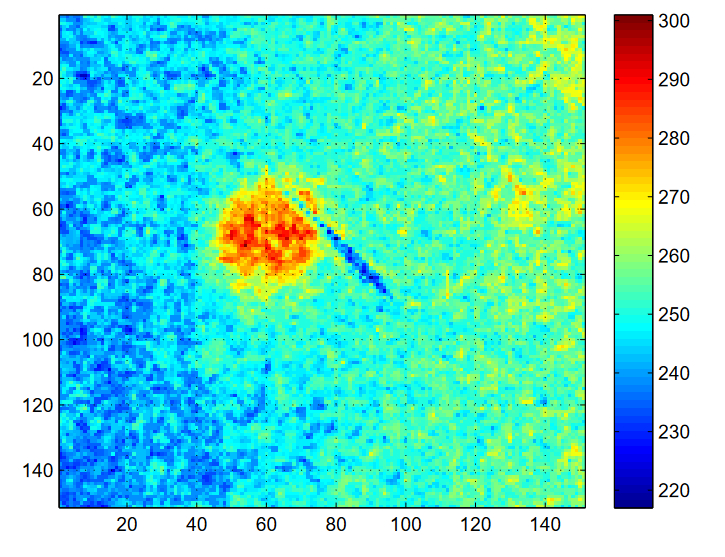
The main question I currently have, is what are the dates of all these captures? Is everything from after the Russian invasion of Ukraine? If it was a long study, were certain times of year showing more UAPs than others? Also, it may be a translation issue, but they refer to at least some of these UAPs as “ships” and it is not clear why — as reasons for such a designation is not discussed directly in the paper itself.
“Flights of single, group and squadrons of the ships were detected, moving at speeds from 3 to 15 degrees per second. Some bright objects exhibit regular brightness variability in the range of 10 - 20 Hz.” (Page 8)
As replication of the study seems relatively simple and inexpensive to setup, it also has potential to be geographically widespread, and could help study whether certain regions have more or less UAPs than others. The large quantity and variety of UAPs observed also reminded me somewhat of the religious broadsheets popular in northern-central Europe in the 16th century that described light and dark globes, among other simple shapes, in the daytime sky.

In somewhat related news, on September 12, the United States Navy responded to a Freedom of Information Act (FOIA) request that they do not want to release any more classified UAP videos at this time. The main reason given was that it might reveal capabilities of US military technology and result in harm to national security. Fortunately for those interested in studying unidentified aerial phenomena, this new method for detection does not require multi-million dollar fighter jets or classified optical and sensor technologies.
Review of Jordan Peele’s Nope and Connection to the Book of Nahum
Jordan Peele’s Nope is his third feature film and is truly a spectacle to behold. The film was written, produced, and directed by Peele, and Nope benefits from that consistent artistic control of the material. The night shots are the best in contemporary film (intent is to be what it is like once your eyes have adjusted), and it does not waste an ounce of screen time.
In interviews for the film, Peele says he got a lot of inspiration for Nope from films like Close Encounters of the Third Kind, Jaws, as well as directors Stanley Kubrick and Alfred Hitchcock. In addition to that, Peele also told Nope actor Brandon Perea to watch, “No Country for Old Men, 2001 Space Odyssey, and Alien.”
Peele takes some of the best essences of those films and makes an original contribution to the sci-fi/horror genre. Without giving too much away, there are major elements that I think make it resemble a contemporary Fortean parable.
In Nope, the Haywood family horse farm has been supplying Hollywood with horses to capture on film for generations. Out in the countryside a long drive from Los Angeles, the Haywoods have been maintaining financially, but the untimely death of the family patriarch takes its toll and troubles mount for the ranch. In order to save the ranch, the surviving Haywoods, OJ (Otis) and Em (Emerald), seek to gain financially by recording the strange activity that has been occurring near the ranch. For the Haywoods, the ranch can be saved from foreclosure, if only they can get that perfectly impossible “Oprah shot” to document the spectacle.
A story about getting the perfect shot is well within Peele’s expertise to tell. Visually, Nope’s color palette is a lot of California desert gulch with pops of red and green-screen green. There are bright dusty days and dark cloudy (often rainy) nights. The horseback vista shots also make it feel like a western and not just an out-in-the-country/isolated type of horror movie.

There is a song in the movie I won’t reveal, because it is a spoiler, which my father would sing to me when I was a kid. Nope is also about the relationships we have with each other and what lengths people will go in order to maintain, or create, a legacy.
Above all though, the film is an examination of spectacle, exploitation, and proper respect in the face of an unknown terrible power. There is also the transformational effect of spectacle itself to consider, as the character Ricky ‘Jupe’ Park makes clear when introducing his new Star Lasso Experience, “After today, you’ll leave here… different.”
Nope, “Bad Miracles,” and Book of Nahum
Nope opens with a quote from the biblical Book of Nahum 3:6 [New King James Version]:
“I will cast abominable filth upon you,
make you vile,
and make you a spectacle.”
The Book of Nahum is a very short book in the Bible. It is written in the style of a poem and foretells the destruction of Nineveh, which was the capitol city of the most powerful empire in the region at the time, Assyria. The Assyrian Empire is portrayed as being particularly cruel and brutal in their subjugation of neighboring peoples. In 701 BCE, Jerusalem was besieged by an Assyrian army that otherwise did as it pleased in the surrounding territories. Independently of biblical accounts, the Assyrian side comes through in palace carvings and clay prisms commissioned regarding the campaign:
“And [King] Hezekiah of Judah who had not submitted to my yoke… him I shut up in Jerusalem his royal city like a caged bird. Earthworks I threw up against him, and anyone coming out of his city gate I made pay for his crime. His cities which I had plundered I had cut off from his land.”
The Book of Nahum’s poetic verse is meant as comfort to people still holding out against Assyrian domination in places like Judah, with a sentiment that the bastards will get what is coming to them. In 612 BCE, Babylonians, Chaldeans, Cimmerians, Medes, Persians, and Scythians, formed a coalition and destroyed the Assyrian capitol city of Nineveh. By 605 BCE there was no longer an Assyrian empire at all. Due to what he foretold having come to pass, Nahum is recognized as a prophet by his people.
Although the film’s title, Nope, is said several times in the film, there was one exchange in the beginning between main characters Em and OJ that makes reference to the supernatural:
OJ: “What's a bad miracle? We got a word for that?”
Em: “Nope.”
The unnerving spectacles in Nope could be interpreted as a series of bad miracles. However, the Book of Nahum is not a treatise on the miraculous, though there is a description of divine power using weather events at Nahum 1:3:
“The Lord is slow to anger and great in power,
And will not at all acquit the wicked.
The Lord has His way
In the whirlwind and in the storm,
And the clouds are the dust of His feet.”
In the second Book of Kings (2 Kings 19:35), written well after the Book of Nahum, it is claimed that the Assyrian siege of Jerusalem in 701 BCE was eventually broken by an angel:
“And it came to pass on a certain night that the angel of the Lord went out, and killed in the camp of the Assyrians one hundred and eighty-five thousand; and when people arose early in the morning, there were the corpses—all dead.”
Taking the story from Kings at face value, and from the perspective of the Assyrians, that angel could have been percieved as a bad miracle.
Biblical angels have a tendency to say to humans they encounter things like, “be not afraid.” This may be due in part to descriptions of divine messengers and celestial beings as symbolically strange and somewhat terrifying.
Many people in the west think of angels, biblical celestial beings, as always simply looking like humans with two wings coming out of their back. However, that particular description does not exist in the Bible. In the Book of Isaiah, Chapter 6, the transformational moment where Isaiah goes from priest to prophet involves seraphs, which are six-winged fiery flying cobras. Below is 3D artist Jonas Pfeiffer’s interpretation of an ophanim based on descriptions in the Book of Ezekiel 1:16-21 (though I am unaware of textual support for a central eye — wheels at that time would have had ‘spokes’ so perhaps a kind of ‘hub’ is being assumed).
Nope aims to reproduce a similar kind of transformative encounter with what could be described as the chaotic transcendent. It greatly succeeds in doing so with an artistic combination of awestruck and terror.
Main Cast (in credits order):
Daniel Kaluuya ... OJ Haywood
Keke Palmer ... Emerald Haywood
Brandon Perea ... Angel Torres
Michael Wincott ... Antlers Holst
Steven Yeun ... Ricky 'Jupe' Park
Wrenn Schmidt ... Amber Park
Keith David ... Otis Haywood Sr.
Poem for 2022.09.16
Carved footpaths echo
Cool fog lingers on calm bay
Wood bench wrapped with grass
Out And About Photo for 2022.09.16
Tree pareidolia in the morning :-0

